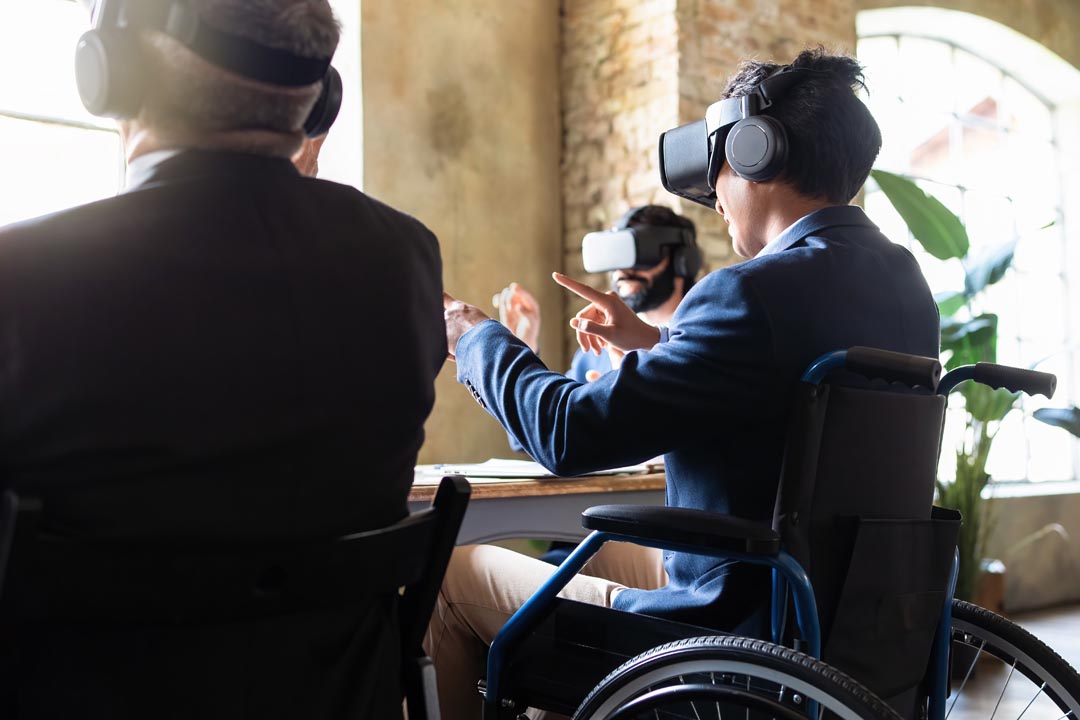‘Learning by doing’ presents limitless possibilities for workforce training, writes Phillip Carmichael Jr
In the ever-evolving landscape of professional development, traditional methods of learning are being redefined by the growth of immersive learning.
One of the key advantages of immersive learning is its ability to engage learners in a way that traditional methods often struggle to achieve
Immersive learning, which relies on virtual reality (VR) and augmented reality (AR) technologies, has become a gamechanger that is transforming workforce training and will continue to do so for years to come.
Definition of immersive learning
Immersive learning refers to an experiential training process that uses technology like VR and AR to simulate real-world scenarios and help learners acquire new skills. While related, VR and AR are distinct technologies that provide experiences with different levels of interactivity.
Virtual reality: Completely immerses learners in alternative digital worlds, accessed through VR headsets. VR replicates real-life scenarios for skill development.
Augmented reality: Blends digital content with the real world. Content can be triggered by specific objects or geographical places, enhancing learning experiences.
Unlike traditional learning methods that rely on books, lectures, or online modules, immersive learning places participants at the centre of a simulated, lifelike experience. This technology-driven training approach creates a sense of presence and engagement, allowing learners to interact with their virtual surroundings and actively participate in the learning process.
Benefits of immersive learning
Engagement and retention
One of the key advantages of immersive learning is its ability to engage learners in a way that traditional methods often struggle to achieve. The interactive, lifelike nature of immersive learning maximises engagement and fosters emotional connection to learning content. Immersive environments provide a hands-on, experiential approach that enhances knowledge retention and application.
Technical skills development
Immersive learning, through its dynamic and interactive nature, significantly enhances the development of technical skills across various industries. In healthcare, for example, medical professionals can utilise virtual reality simulations to practise surgical procedures, improving their dexterity and understanding of anatomy before entering the operating room. Similarly, manufacturing workers can undergo immersive training to learn how to operate complex machinery and troubleshoot equipment failures in a risk-free virtual environment, minimising downtime and safety risks on the factory floor.
Soft skills enhancement
Beyond technical skills, immersive learning is instrumental in developing and enhancing soft skills such as communication, teamwork and leadership. Virtual scenarios can simulate real-world interpersonal interactions, providing learners with opportunities to practise and refine their soft skills in a controlled environment, without the pressure of face-to-face, in-person scenarios. This comprehensive approach to professional development addresses the need for well-rounded professionals in the workplace.
Cost-efficiency and scalability
While the initial investment in immersive learning technologies may be significant, long-term benefits include cost-efficiency and scalability. Once developed, virtual environments and simulations can be reused for multiple training sessions, reducing the overall cost per participant. Additionally, these technologies allow organisations to scale their training programmes efficiently, reaching a larger audience without compromising the quality of the learning experience.
Immersive learning use cases by industry
Automotive
Through VR and AR-fuelled training scenarios, employees in the automotive industry can engage in lifelike simulations of vehicle assembly, repair, and maintenance tasks, allowing them to gain practical skills before they ever touch a car or truck. Additionally, AR-powered guides and instructional prompts can also support these employees as they are actively working on vehicles.
Medical and healthcare
Healthcare professionals can use immersive learning for emergency response training with realistic, VR-driven scenarios providing a risk-free opportunity for providers to practise care co-ordination and intervention prioritisation. In addition, AR can be used to provide patients with interactive rehabilitation exercise guides and physical therapy programmes tailored to their specific needs.
Utilities
VR simulations can replicate dangerous electrical scenarios, such as high-voltage equipment failures or electrical arc flash incidents. Utility workers can use these simulated scenarios to practise how to safely remedy these emergency situations, while also developing a deeper understanding of safety procedures and protocols. Immersive learning can also help with pipeline inspection and maintenance. AR applications can overlay digital information on to physical pipeline infrastructure, allowing utility inspectors to access real-time data and support during inspection, maintenance, and/or repair. In this way, AR-enabled mobile devices or smart glasses can help improve accuracy, efficiency and safety.
Conclusion
Immersive learning holds tremendous potential and promise for the future of workforce training and development. As technology continues to advance, the integration of virtual and augmented reality into training programmes will become increasingly common.
Organisations that embrace immersive learning will not only foster a culture of continuous learning but will also empower their workforce with the skills and knowledge needed to thrive in a dynamic and competitive business landscape. Immersive learning is not just a trend; it is a serious force that is redefining the way professionals learn and grow.
Phillip Carmichael Jr is Marketing Associate at Intellezy




